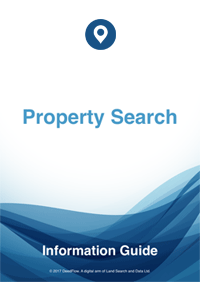Death of a Joint Owner
Contents
Overview
Whenever a property is in joint ownership and one of the owners die, it becomes necessary to contact the Land Registry and ask them to remove the deceased person’s name. The process will differ slightly according to the type of ownership, which this articles explains.
The Need to Remove a Deceased Owner’s Name
Failure to notify the Land Registry of the death of one of the deceased owners may cause difficulties when you come to sell or re-mortgage your property, and you may then find yourself having to apply for the name to be removed at in inopportune time.
Joint Tenancy
Most properties are owned and registered as beneficial joint tenancies, which is what the Land Registry will assume is required unless an application is made to specifically register it as a tenancy in common.
The process for removing a deceased owner’s name where the ownership is a joint tenancy is straight forward. The surviving owner should complete Land Registry form DJP and send this to the Land Registry.
Send to the Land Registry:
- Completed Form DJP
- Official copy of Death Certificate
You should send them to:
Land Registry Citizen Centre, PO Box 74, Gloucester GL14 9BB.
Tenancy in Common
If you know the property is held as a tenancy in common you should, in addition to sending the two above documents to the Land Registry, also send an application to remove the Restriction that identifies the property as being held as a tenancy in common. You do this by completing Land Registry Form ST5.
Check the Existing Registration First
It would be prudent to check the Title Register before doing the above to check:
1 Whether or not the property is held as a joint tenancy or tenancy in common. This will not be stated in clear words, so you should look in Section B of the Title Register to see if the following Restriction is present:
RESTRICTION: No disposition by a sole proprietor of the registered estate (except a trust corporation) under which capital money arises is to be registered unless authorised by an order of the Registrar or the court.
If it is present this signifies that the property is held as a tenancy in common. Conversely, if it is not present this means that the property is registered as a joint tenancy.
2 You will need the Land Registry Title Number, which you will find at the top of each page of the Title Register.
In a Nutshell
- Check the Title Register for clarification of the type of ownership
- Download form DJP. If the property is registered, also download form ST5.
- Complete the forms and send to the Land Registry together with an official copy of the Death Certificate.
Title Register
The Land Registry Title Register holds data relating to the property ownership, purchase price, mortgage, tenure, covenants, rights of way, leases and class of title.
£19.95Title Plan
The Title Plan shows an outline of the property and its immediate neighbourhood, and uses colours to identify rights of way, general boundaries and land affected by covenants.
£19.95Associated Documents
Deeds creating Restrictions, Covenants, Easements, etc. are often kept digitally by the Land Registry and made available for sale due to their invaluable detail and content to assist in further understanding the Restrictions, etc.
£29.95


